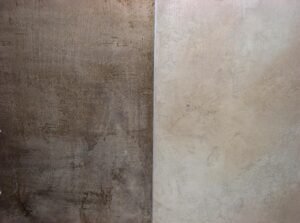Introduction to The Best Paint for Home Walls
Choosing the right paint for home walls is a critical decision that extends far beyond mere aesthetics. The paint you select can have a significant impact on various aspects of your living space. From influencing the overall ambiance and mood of a room to enhancing durability and even affecting the perceived size of the space, the choice of paint plays multiple roles in home decoration and maintenance.
Aesthetically, the right shade and type of paint can transform a space, creating environments that are calming, invigorating, or balanced, depending on your preferences. Color experts often emphasize how the right hues can psychologically influence the inhabitants’ state of mind, either contributing to relaxation in bedrooms or energizing productivity in home offices. Moreover, the choice of paint can complement or highlight architectural features and furnishings, bringing out the best in your home’s design elements.
Durability is another crucial factor; high-quality paints can withstand daily wear and tear, resist stains and scratches, and maintain their appearance for years. Specific formulations are designed for high-traffic areas like kitchens and hallways, where additional robustness is required. Furthermore, advancements in paint technology now offer options that are easier to clean, adding to their longevity and practicality.
In addition, the characteristics of paint can also affect how large or small a room feels. Light, neutral colors can make a compact room appear more spacious and open, while darker hues might add coziness to larger, less intimate spaces. This guide aims to provide you with a comprehensive understanding of various types of paints, their specific purposes, and expert tips to help you make the best choice based on your unique needs and conditions.

Understanding Different Types of Paint
When selecting paint for home interiors, understanding the different types of paint available on the market is crucial for making an informed decision. The most commonly used types include latex (water-based) paints, oil-based paints, and specialty paints such as eco-friendly or low-VOC options. Each type comes with its own set of advantages and drawbacks when considering factors like durability, ease of application, drying time, and VOC (volatile organic compound) content.
Latex paints, often referred to as water-based paints, are the most popular among homeowners for good reasons. Their primary advantages lie in their quick drying time and ease of application. Latex paints are versatile and suitable for most surfaces, offering a smooth finish that is easy to clean up with soap and water. Additionally, they emit fewer VOCs, making them a more environmentally friendly option. On the downside, latex paints may not be as durable as their oil-based counterparts and might require more frequent touch-ups.
Oil-based paints, although less commonly used today, still have a niche following due to their superior durability and finish. These paints tend to be more robust, offering a high-gloss finish that is resistant to wear and tear, making them ideal for high-traffic areas. However, the significant disadvantages are their longer drying time, challenging application process, and higher VOC emissions. Cleaning up oil-based paints requires solvents like turpentine, making them less convenient for everyday use.
Given the increasing focus on environmental sustainability, specialty paints such as eco-friendly or low-VOC options are gaining traction. These paints minimize harmful emissions and are safer for indoor air quality, making them ideal for homes with children or pets. While they share many of the pros of latex paints, like quick drying times and ease of application, their primary advantage is the significant reduction in VOC content, making them a healthier option. The main con is that these specialty paints can be more expensive than conventional options, but the investment often pays off in a healthier living environment.
In summary, the choice between latex, oil-based, and specialty paints should be based on the specific needs of your home and the surfaces involved. Latex paints offer convenience and versatility, oil-based paints provide durability, and specialty paints contribute to a healthier living space with lower environmental impact.

Finishes and Their Implications
When selecting paint for home walls, understanding the various finishes is crucial, as each finish impacts the overall aesthetics, texture, and maintenance requirements of the painted surface. The most common finishes available are matte, eggshell, satin, semi-gloss, and gloss. Each offers unique properties tailored to different room functions and stylistic preferences.
Matte finish paints provide a non-reflective, velvety surface, making them ideal for hiding imperfections on walls. They deliver a rich, sophisticated look suitable for bedrooms and living rooms where a serene ambiance is desired. However, matte finishes can be more challenging to clean and may not withstand high-traffic areas well.
Eggshell finishes, with a subtle sheen, strike a balance between matte’s elegance and increased durability. They are more resistant to dirt and easier to clean, making them a popular choice for areas like dining rooms and hallways. The soft luster of eggshell paints does not draw attention to wall imperfections while still providing some reflective qualities.
Satin finishes offer a smooth, pearlescent appearance well-suited for high-traffic zones such as kitchens, bathrooms, and children’s rooms. They are durable, easy to clean, and resist moisture and staining, making them practical for spaces requiring frequent upkeep.
Semi-gloss finishes are known for their high durability and pronounced sheen. They are ideal for trim, doors, and cabinets, as they can endure constant cleaning and are highly resistant to moisture. The increased reflectiveness of semi-gloss paints can highlight surface imperfections, so meticulous preparation is essential.
Lastly, gloss finishes provide a high-shine, reflective surface that is both durable and easy to clean. While less commonly used for entire walls, gloss paints are perfect for areas that must endure constant cleaning, such as baseboards or commercial spaces. Their bold finish can create a striking visual impact but demands a flawless substrate to avoid prominently showcasing defects.

Color Selection Tips and Trends
Selecting the perfect color for your home walls can significantly influence the ambiance and aesthetic appeal of your living spaces. Understanding current color trends, color psychology, and how different shades impact the mood of a room is crucial in making an informed decision.
Current color trends highlight a resurgence of earthy and natural tones. Greens, soft blues, and warm neutrals are particularly popular this year, reflecting a growing inclination towards creating serene and tranquil environments. Vibrant colors like bold terracotta and rich mustard yellow are also making a statement, appealing to those looking to infuse their spaces with energy and warmth.
Color psychology plays a pivotal role in selecting the perfect hue. For instance, blue is often associated with calmness and productivity, making it an excellent choice for home offices and bedrooms. Yellow, on the other hand, is known to evoke happiness and positivity, ideal for kitchens and dining areas. Neutral tones such as beige and gray create a versatile backdrop that can be easily complemented with colorful decor and furniture. Mithila paints offer an extensive range of colors, resonating with the latest trends and classic shades that align with your space’s desired atmosphere.
When selecting colors, it is essential to consider color swatches and natural light. Paint colors can look different under various lighting conditions, so it’s advisable to test swatches on your walls and observe them at different times of the day. Natural light can dramatically alter the appearance of a color, possibly making it look lighter or darker than expected. Coordinating with existing furniture and decor is equally important. By choosing colors that complement your interiors, you ensure a harmonious and cohesive look throughout your home.
Popular color palettes include monochromatic schemes that use various shades of a single color, creating a subtle yet sophisticated look. Complementary color combinations, such as blue and orange or green and red, can add a dynamic and vibrant touch. Neutral palettes paired with bold accent colors also provide a balanced and visually appealing outcome. With these tips and the diverse offerings from Mithila paints, you can effortlessly achieve the perfect color scheme for your home walls.

Preparing Walls for Painting
Proper preparation of walls is indispensable for achieving a seamless and enduring finish, whether you’re using premium brands or traditional options like Mithila Paints. The process begins with cleaning the surface to remove any dirt, grease, or grime that could interfere with paint adhesion. A gentle solution of soap and water or a specialized wall cleaner is usually sufficient. Ensure that the walls are thoroughly rinsed and dried before proceeding to the next steps.
Once the surface is clean, inspect your walls for any cracks, holes, or imperfections. These should be filled using a suitable filler or spackling paste. Apply the filler with a putty knife, and allow it to dry completely. Larger holes or more significant damage may require additional reinforcement, such as mesh tape or wall patches, before being filled.
Sanding is the next crucial step to ensure a smooth surface. Use fine-grit sandpaper to level out any uneven areas where filler was applied and to gently scuff the entire wall surface. This abrades the wall slightly, offering better grip for the primer and subsequent paint layers. Be sure to remove all dust generated during sanding; a vacuum or a damp cloth can be effective in this task.
The application of primer is vital, especially if you’re dealing with new drywall, patched areas, or transitioning to a drastically different color. Primer seals the wall surface, provides a uniform base, and boosts the longevity and vibrancy of the topcoat. Choose a primer compatible with the type of paint you plan to use, whether it’s water-based, latex, or an oil-based formula like traditional Mithila Paints.
As for tools and materials, a comprehensive wall preparation toolkit should include items such as drop cloths, painter’s tape, sanding blocks or an electric sander, a variety of brushes and rollers, and your preferred brand of primer. Investing in high-quality tools not only simplifies the preparation process but also significantly improves the final outcome.

Application Techniques for a Professional Finish
Achieving a professional-looking paint finish involves a combination of precise methods, quality tools, and meticulous attention to detail. First and foremost, the technique of cutting in is essential. This involves painting the edges of walls, ceilings, and around fixtures with a brush to create clean lines and ensure consistent coverage. To achieve this, use an angle sash brush, which provides better control and accuracy. Start by painting a strip about 2-3 inches wide along the edges, ensuring you blend the cut-in areas with the subsequent rolling process.
When it comes to rolling, selecting the right roller can make a significant difference. A high-quality synthetic or wool-blend roller cover, suited to the texture of your walls, will provide an even application and reduce the appearance of roller marks. Begin by loading the roller evenly with paint, removing excess to prevent drips. Apply the paint in a “W” or “M” pattern, filling in the gaps without lifting the roller off the surface. This technique helps distribute the paint uniformly and minimizes lap marks.
Brushing is another critical element, especially for trim, corners, and smaller areas. A high-quality brush with synthetic bristles is recommended for smoother finishes. When brushing, use gentle strokes and avoid over-brushing, which can lead to streaks and an uneven finish. For an optimum finish, always brush in one direction, ensuring that layers are thin and smooth.
To avoid common pitfalls like streaks and drips, continuous monitoring and immediate correction are crucial. If streaks appear, lightly blend them with a brush or roller. Address drips promptly by smoothing them out with a damp brush. Uneven coverage can be mitigated by maintaining a wet edge, ensuring subsequent strokes merge seamlessly with the previously painted areas.
The success of your painting project heavily relies on using premium-quality tools. Invest in high-grade brushes, rollers, painter’s tape, and drop cloths. Additionally, follow the correct painting sequence: start with ceilings, move to walls, and finish with trim and details.
Whether painting intricate designs like Mithila paints or applying simple, solid colors, employing these expert techniques will help you achieve a polished, professional finish.

Maintaining Painted Walls
Maintaining the aesthetic appeal and durability of your painted walls is essential for preserving the ambiance of your home. Whether you have adorned your walls with vibrant Mithila paints or classical hues, proper upkeep ensures long-lasting beauty. Regular dusting forms the foundation of wall maintenance. Use a soft, microfiber cloth or a vacuum with a brush attachment to remove dust and cobwebs gently, reducing the risk of abrasive damage.
Spot cleaning is crucial for addressing localized dirt and stains. For latex paints with a matte or flat finish, a mixture of warm water and mild dish soap typically suffices. Lightly dab the stained area using a sponge or soft cloth without applying excessive pressure. Gloss, semi-gloss, and satin finishes, which are more resilient to moisture and scrubbing, can withstand slightly stronger cleaning agents. However, always test any cleaning solution on a discreet section of the wall to avoid unintended damage.
Deep cleaning is a task that should be undertaken occasionally to rejuvenate the walls thoroughly. For walls painted with Mithila paints or similar high-quality finishes, use a gentle, non-abrasive cleaner. Dilute a small amount of the cleaner in water and apply it with a soft sponge, working from the top down to prevent streaking. Ensure the room is well-ventilated and avoid soaking the walls to prevent moisture damage.
Touching up walls can mitigate the effects of minor chips, scuffs, or fading. Keep some leftover paint from the original batch for consistency in color. When performing touch-ups, use the same type of paint applicator, whether a brush or roller, to blend the repair seamlessly with the surrounding area. Addressing larger issues like extensive fading or discoloration may require repainting the entire wall or section to achieve uniformity.
Proactive measures can also deter common issues. For example, using quality primers before applying paint can enhance adhesion and durability. Additionally, be mindful of environmental factors such as exposure to direct sunlight, which can accelerate fading. By adhering to these maintenance practices, the longevity and appearance of your painted walls can be preserved, keeping your home vibrant and welcoming.
Frequently Asked Questions and Expert Tips
When choosing the best paint for home walls, several factors deserve attention. Understanding these can help homeowners make informed decisions and achieve optimal results. Here are some frequently asked questions, along with expert insights:
Q: How do I select the right type of paint for my walls?
A: The choice of paint largely depends on the room and its usage. For high-traffic areas like kitchens and hallways, opt for washable and durable finishes like satin or semi-gloss. For bedrooms and living spaces, matte or eggshell finishes can provide a cozy and elegant look.
Q: What’s the best way to apply paint for a smooth finish?
A: Proper preparation is key. Start by cleaning the walls, repairing any imperfections, and applying a primer. Invest in quality brushes and rollers that suit the type of paint. Using even strokes and maintaining a wet edge will help avoid lap marks. Applying two coats is generally recommended for the best coverage.
Q: How should I handle painting over dark colors?
A: Painting over dark colors requires extra care. Begin with a high-quality primer with strong coverage abilities. A stain-blocking primer can effectively prepare the surface. After the primer has dried, apply two coats of your chosen paint. This technique ensures that the dark color doesn’t bleed through.
Q: How can I prevent mold growth on painted walls?
A: Moisture control is crucial in preventing mold development. Using mold-resistant paint in areas prone to humidity, like bathrooms and basements, can be beneficial. Additionally, ensure adequate ventilation and consider using dehumidifiers to maintain a dry environment. Regular inspection and prompt repairs can also mitigate mold issues.
Q: Are there eco-friendly paint options available?
A: Yes, there are eco-friendly paints on the market that have low or zero VOC (volatile organic compounds). These paints are better for indoor air quality and reduce harmful emissions. When selecting such paints, look for certifications and labels that assure their environmental benefits.
Expert Tip: Incorporate natural design elements such as “Mithila Paints” for a unique and culturally rich aesthetic. These traditional designs not only enhance your walls with vibrant, timeless patterns but also offer a storytelling aspect. Remember, proper maintenance and touch-ups will extend the life and look of your beautifully painted walls
